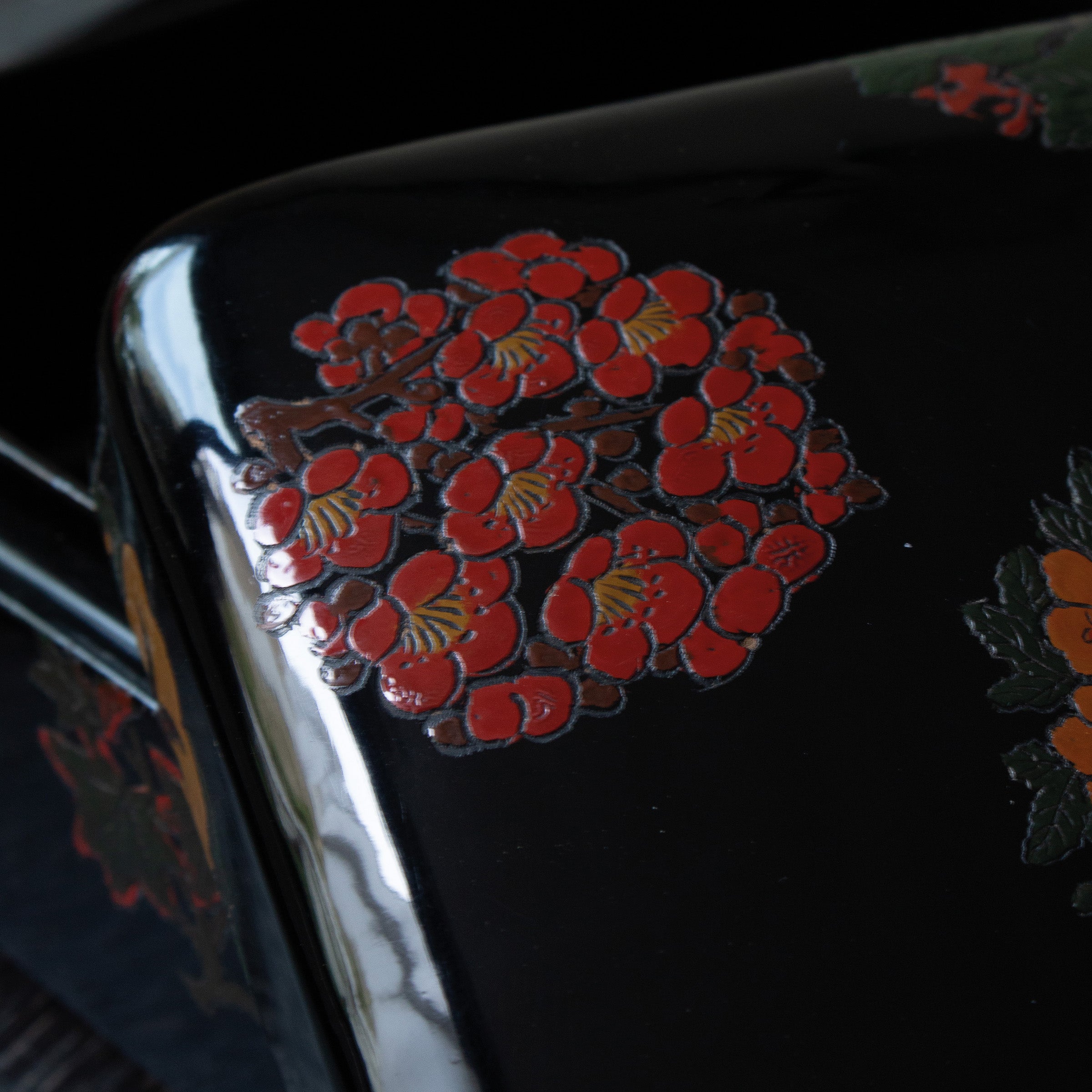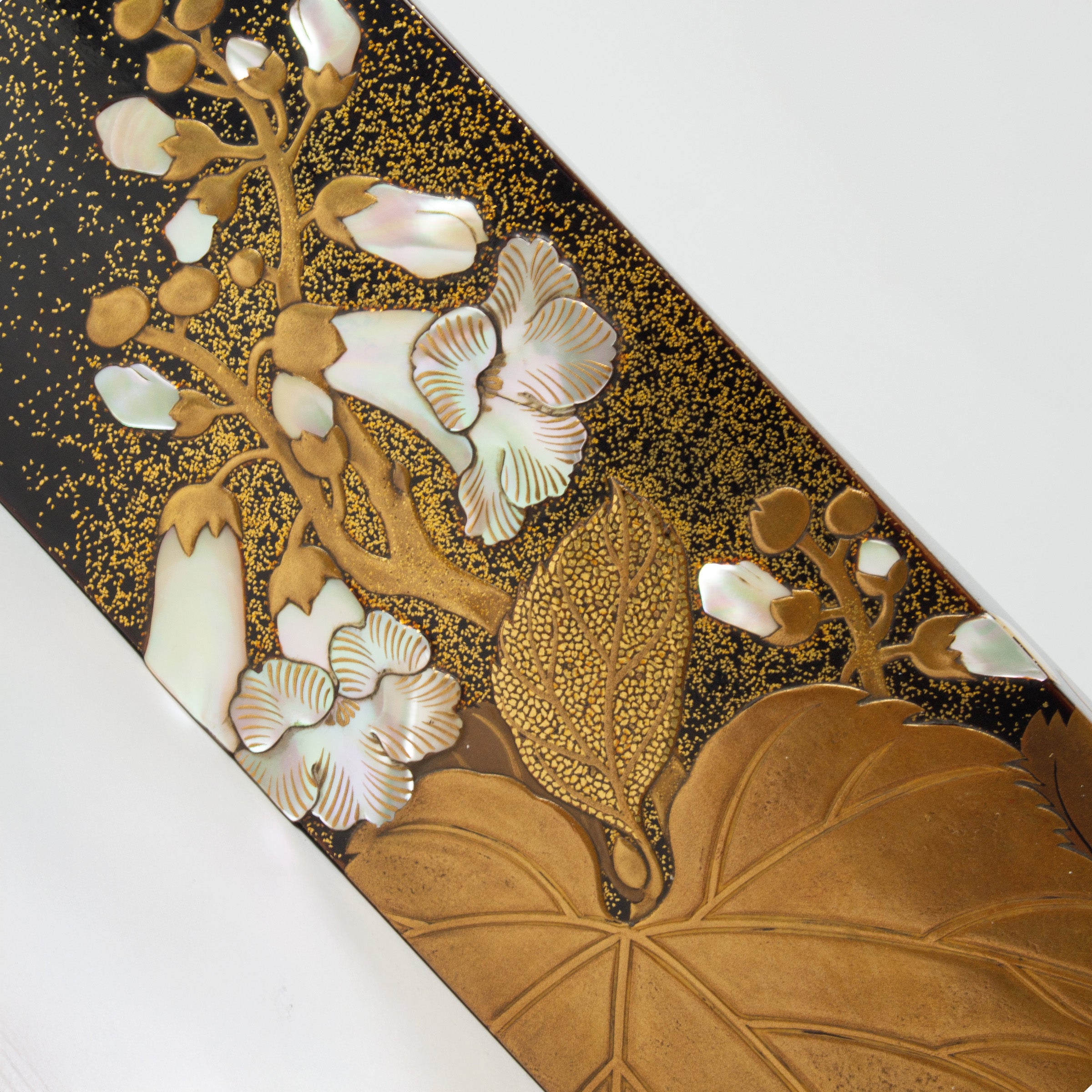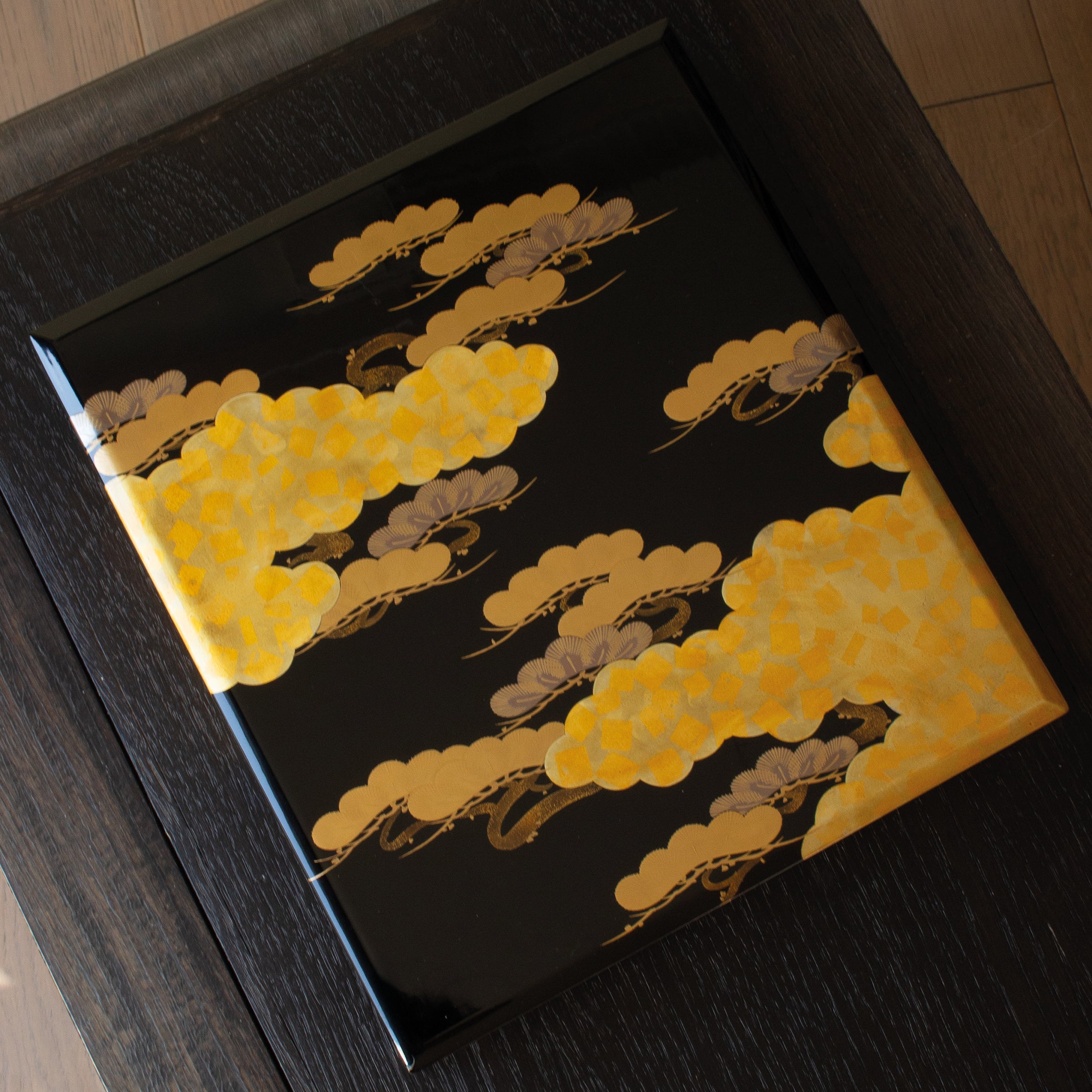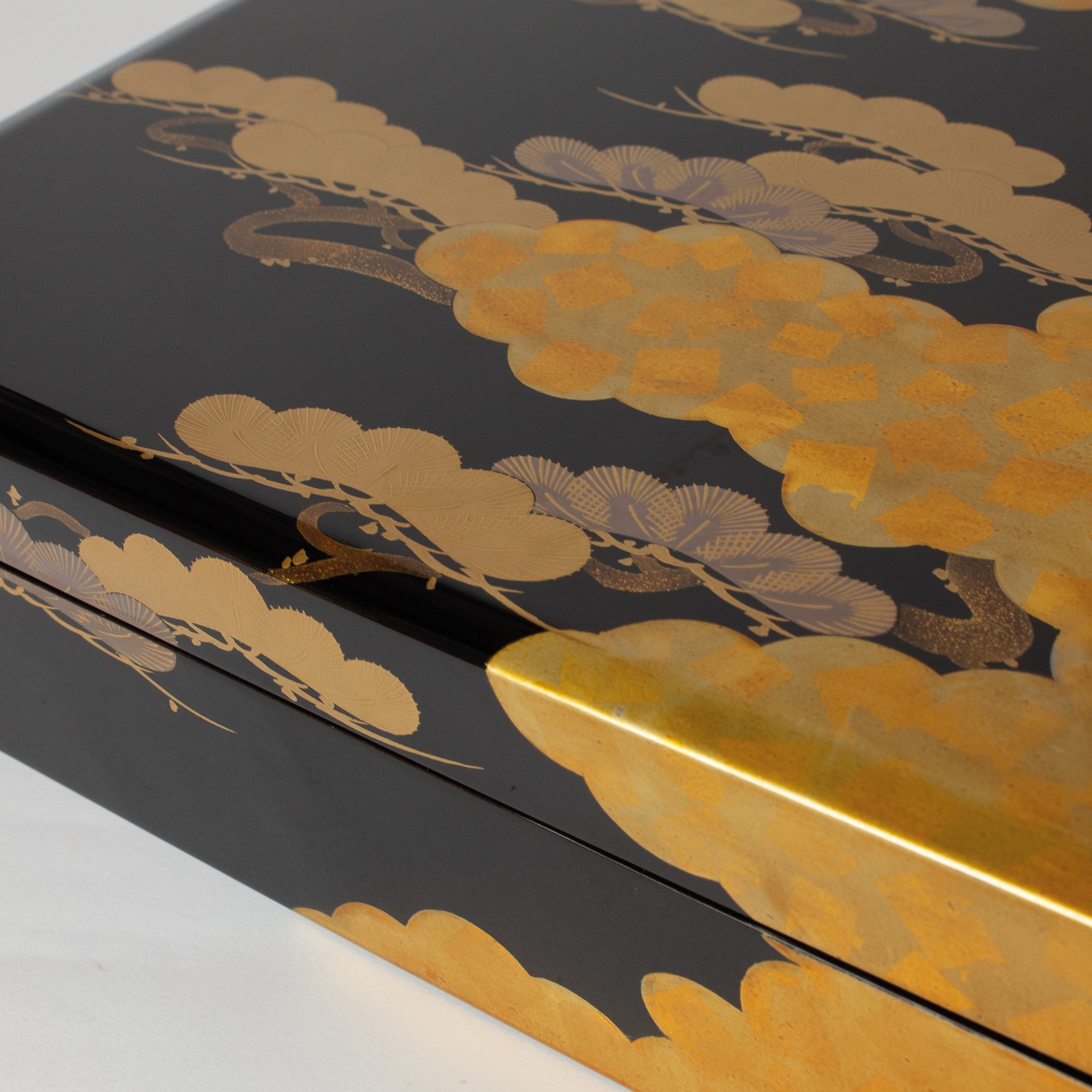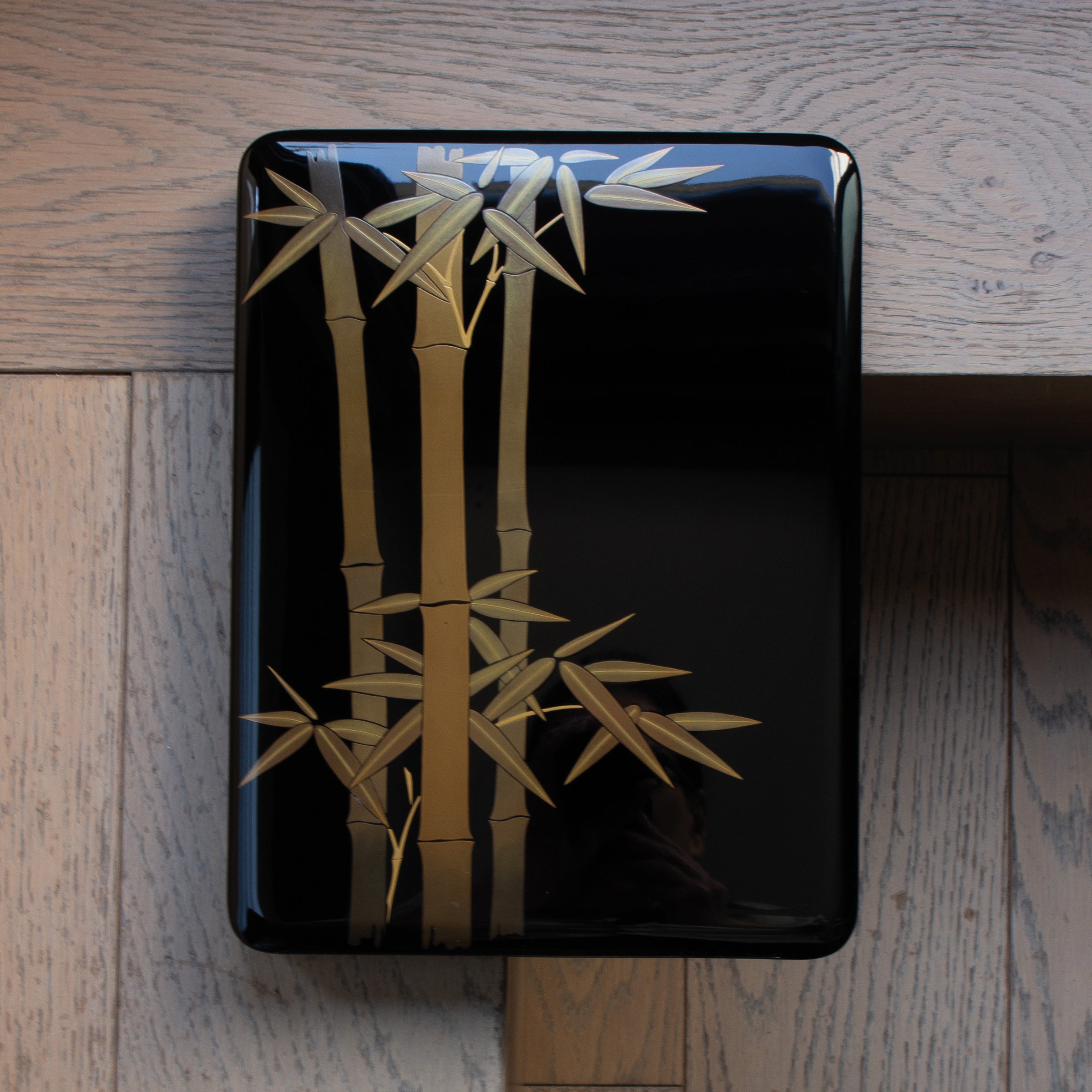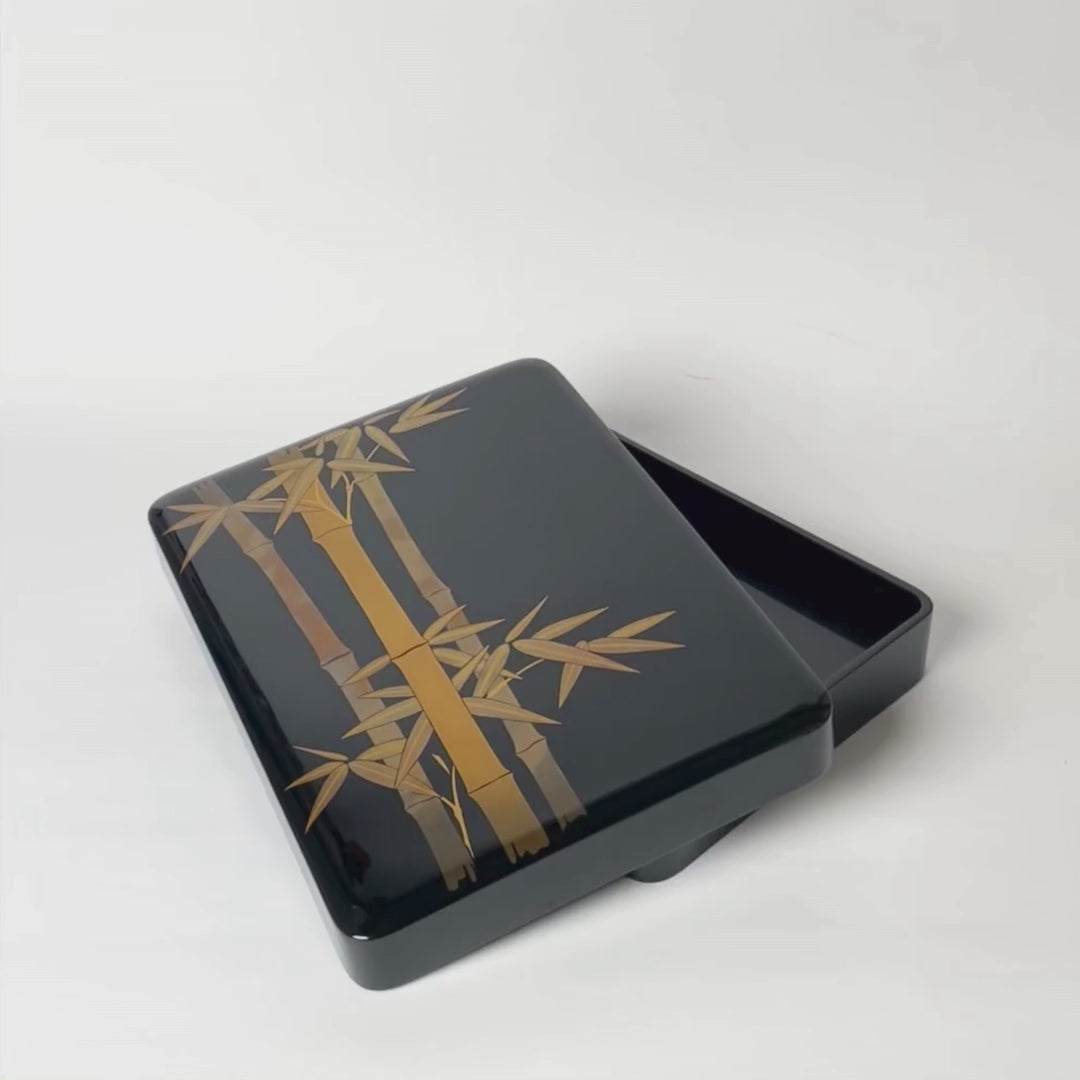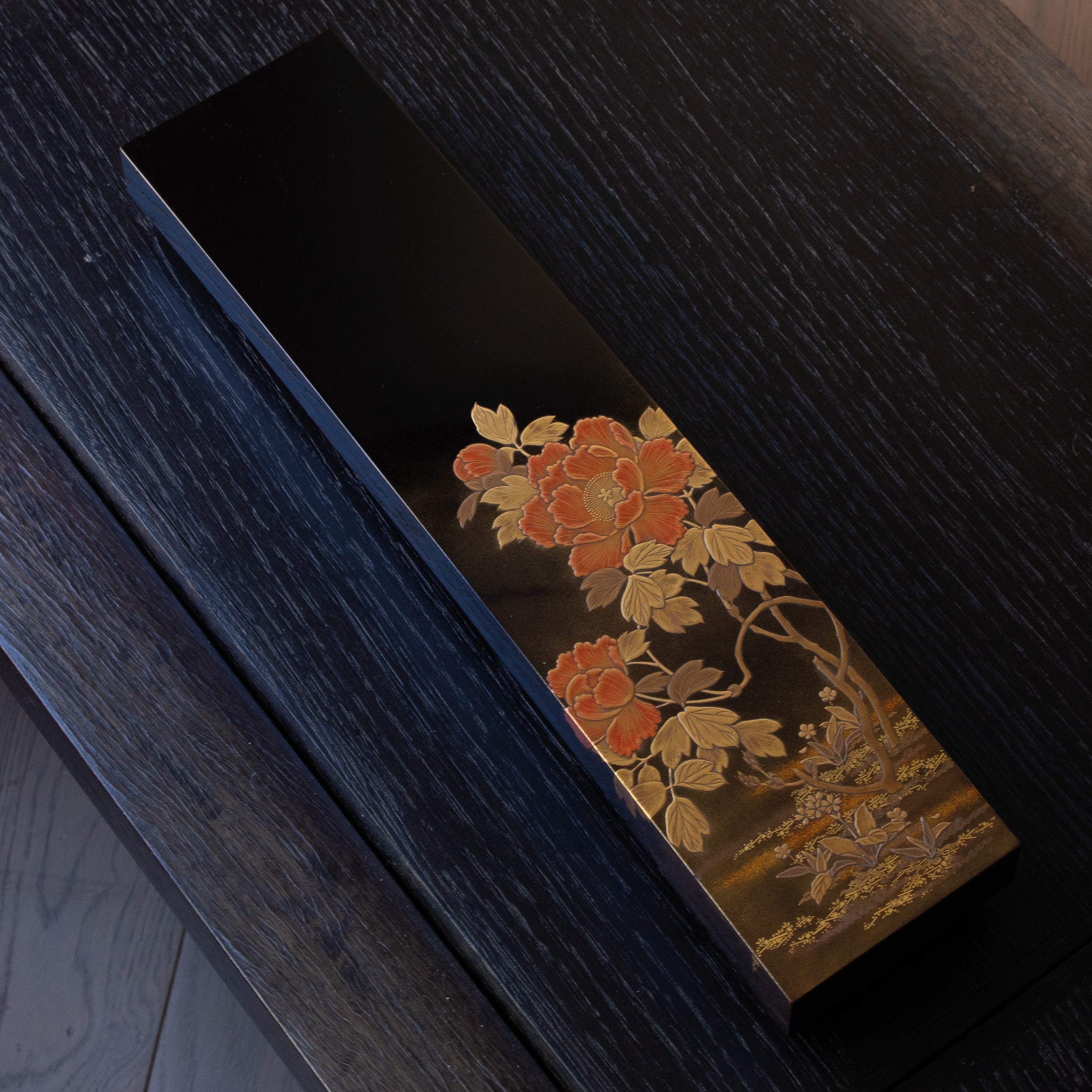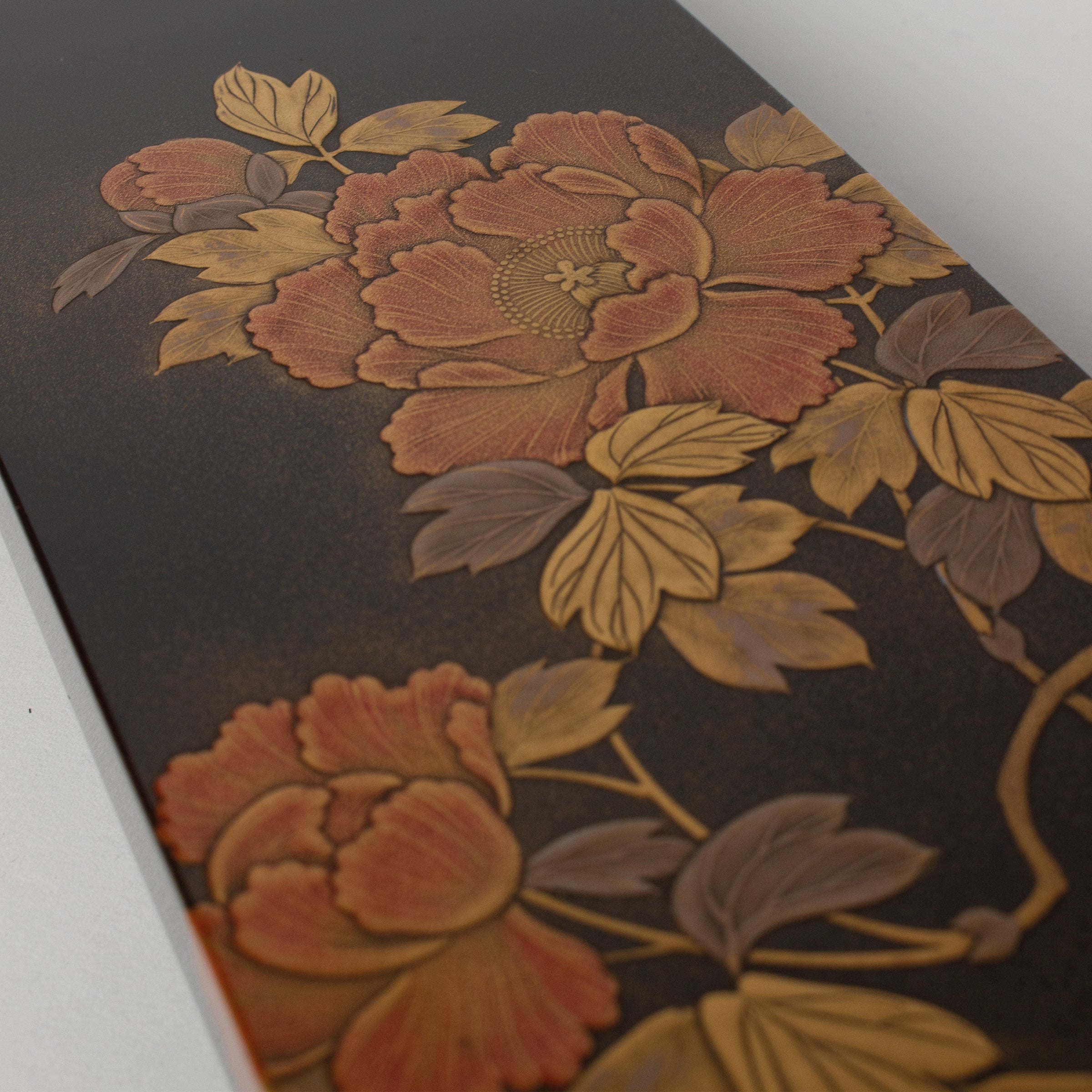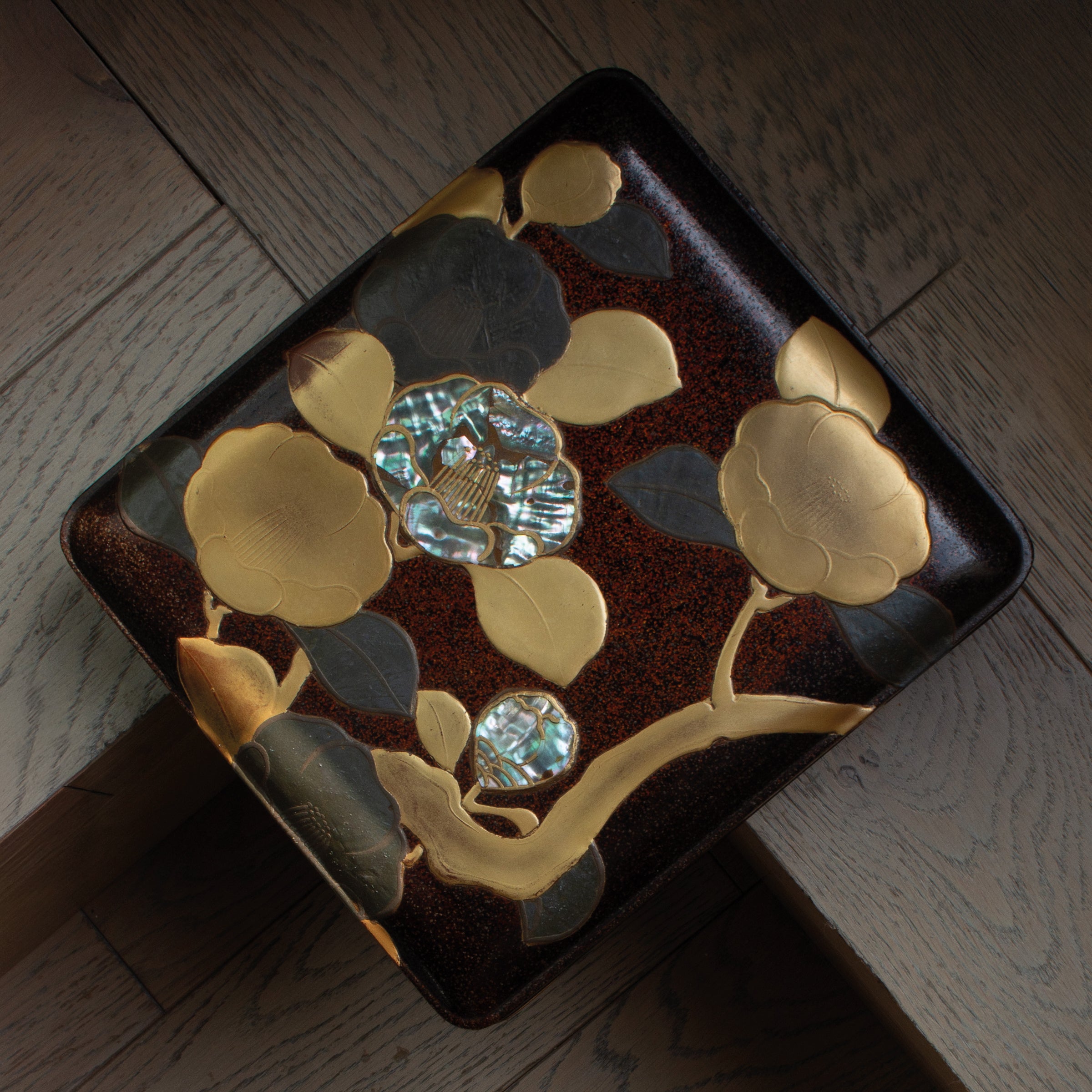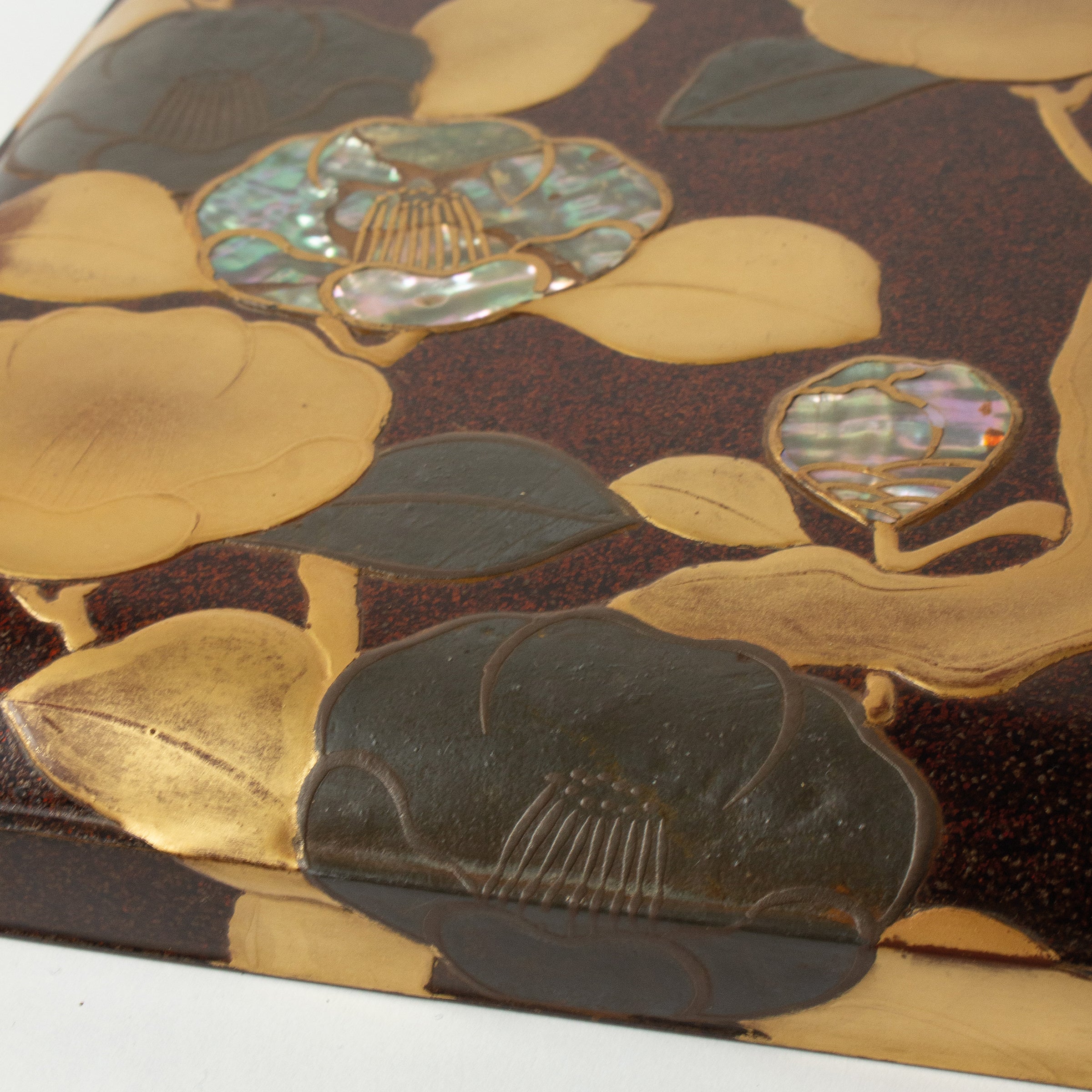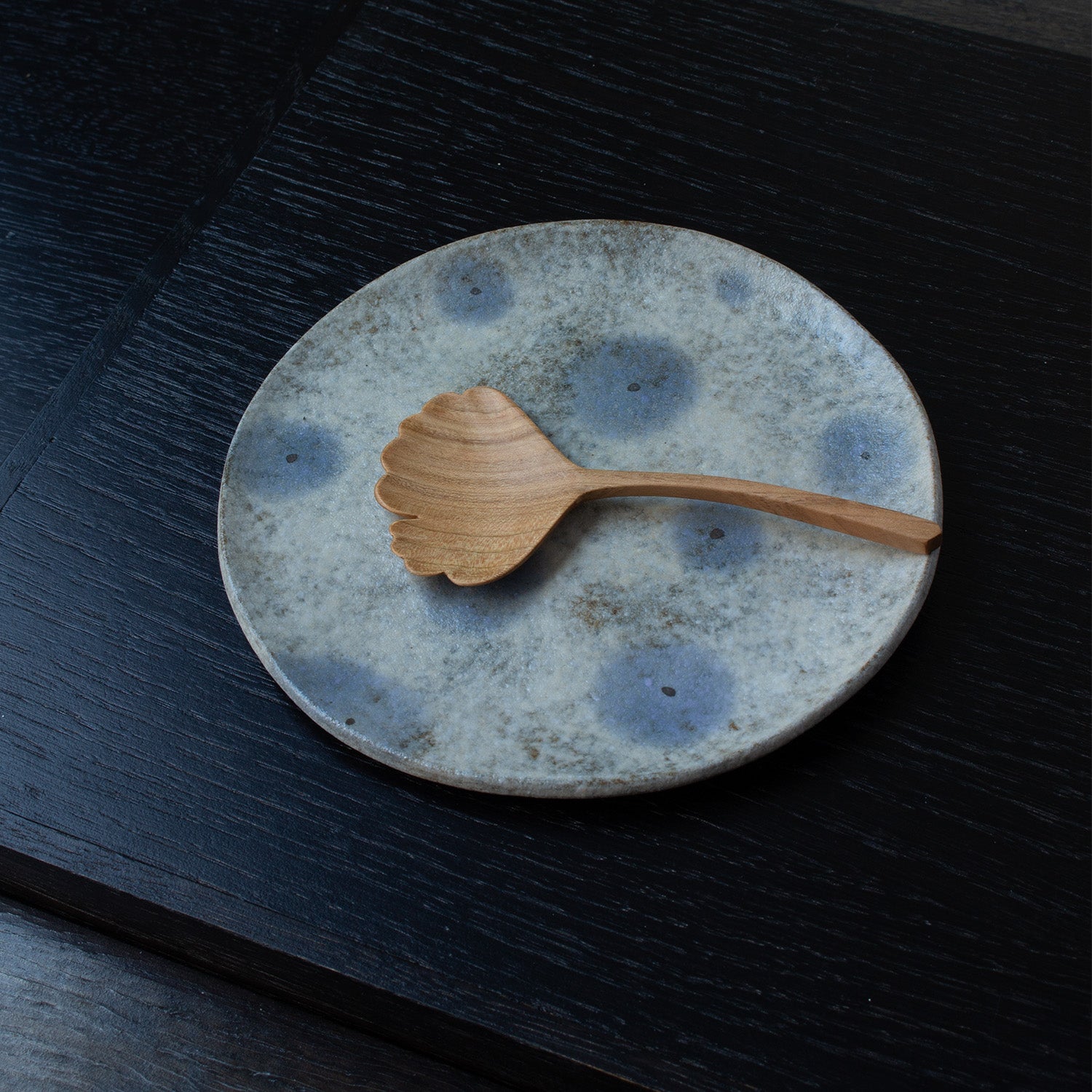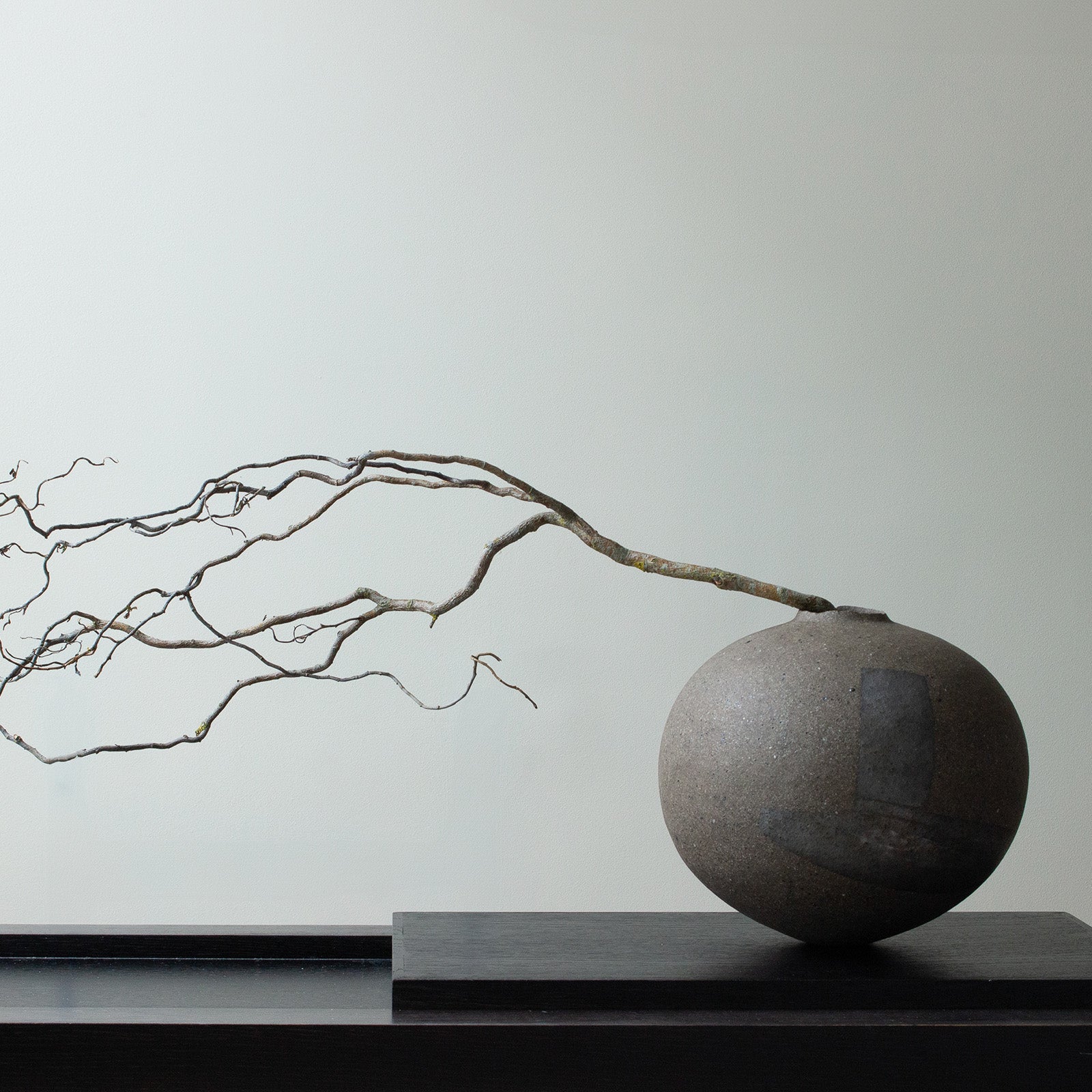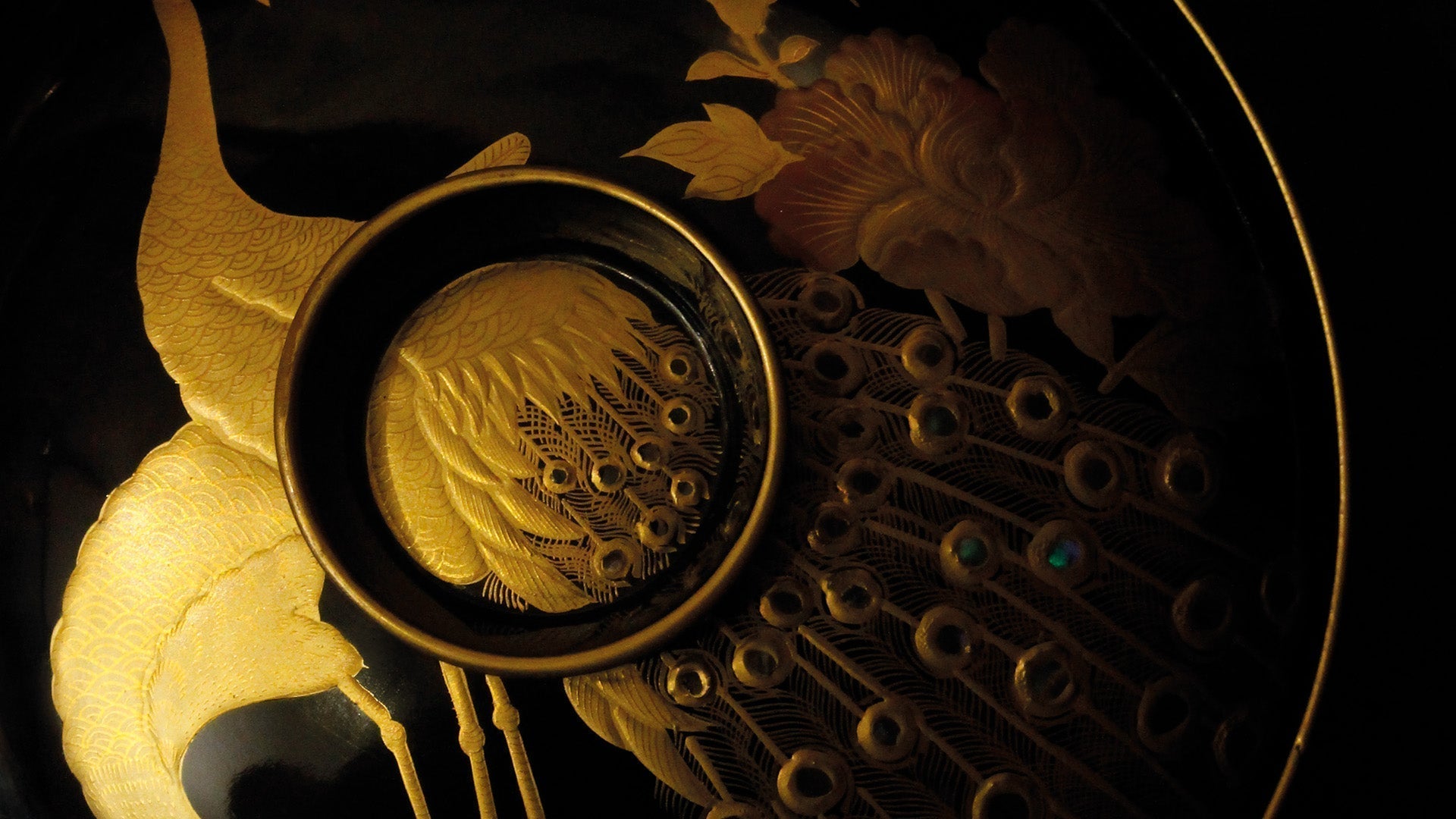Article: How to care for a Japanese urushi lacquerware object: the expert guide

How to care for a Japanese urushi lacquerware object: the expert guide
Japanese lacquer, or urushi, is a precious material with exceptional qualities. Derived from the sap of the lacquer tree (Rhus vernicifera), it is applied in multiple thin layers, sometimes more than fifty, on an object, often made of wood, on which a precious decoration (gold powder, mother-of-pearl, etc.) might also be applied. Each layer of urushi lacquer is carefully polished, then dried in a controlled humid environment (muro) at approximately 25/30 °C and 70/80% humidity. This long and demanding process results in a hard, waterproof film of astonishing strength, both flexible and resistant.
Used for centuries, urushi lacquer is naturally antibacterial, water-repellent, and resistant to alcohol, oil, wear, and extreme temperatures. When properly cared for, it does not lose its luster over time: high-quality urushi lacquer retains its brilliance, depth, and vitality for generations. Unlike some materials that develop a patina or tarnish, lacquer does not degrade but evolves very slightly, revealing delicate nuances without ever fading. Centuries-old pieces remain untouched in their beauty.
However, this robustness does not exclude a certain sensitivity: thermal shock, direct exposure to sunlight, stagnant humidity or aggressive washing can cause irreversible alterations. Its maintenance therefore requires attention, method and knowledge.
Fundamental principles to be respected
Never use a dishwasher, microwave, oven or dish dryer: extreme temperatures and sudden changes will crack or whiten the lacquer.
-
Never leave a lacquered object soaking in water: the humidity will eventually reach the supporting wood and deform it.
-
Absolutely avoid any prolonged direct exposure to the sun: UV rays dry out and dull the surface.
-
Handle with care, whether decorated or not: a hard sponge, metallic rubbing or rough stacking easily scratch the lacquer film.
The steps of a rigorous care
-
Clean immediately after use
Rinse with lukewarm water (never hot). If necessary, add a single drop of very diluted neutral soap to dissolve grease. Use a soft sponge or a smooth, smooth cloth; avoid scrapers, rough microfibers, and brushes. -
Avoid thermal shocks
Before pouring a hot liquid (into a bowl for example), warm the object under a stream of lukewarm water to prevent micro-cracks and irreversible whitish clouds. -
Dry thoroughly
Wipe immediately with a lint-free cloth (gauze, fine cotton). A second dry cloth can then polish the surface and revive the shine. -
Feed the surface carefully
In a very dry environment or after a long period of inactivity, some Japanese specialists allow polishing the surface with a cloth lightly impregnated with a light cooking oil (rapeseed, camellia, perilla). The quantity should be minimal, and the excess should be removed immediately. This ancestral practice remains optional and should be avoided if you lack experience. -
Store in suitable conditions
Store lacquered objects at a stable temperature, neither too humid nor too dry, away from radiators, air conditioners, or direct sunlight. When an object is not in use for a long time, place a small bowl of water nearby (without contact) to maintain humidity. -
Possibly have it repaired
Cracks, chips, whitening or loss of adhesion may require the intervention of a specialist. A touch-up with fuki-urushi or, in the event of a break, kintsugi (lacquer and gold powder) can restore integrity and shine to the object without betraying its aesthetics. At Atelier Ikiwa we prefer the idea of an object in urushi lacquer that will always remain sublime despite possible small accidents, and which therefore does not need to be repaired, so as not to alter the intention of the master craftsman (unlike ceramics, for which kintsugi is particularly suitable).
A noble material that stands the test of time
Japanese urushi lacquer isn't fragile: it's a strong, flexible, and durable material. Maintaining it isn't a burdensome ritual, but rather a gesture of continuity that extends the craftsman's intention. With this simple care, a precious lacquered piece remains luminous and profound, capable of lasting for generations without losing a single shred of its beauty.
Want to learn more? Discover Atelier Ikiwa's precious lacquerware and read our other articles dedicated to this remarkable art.



